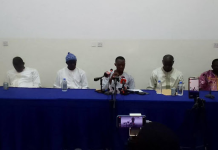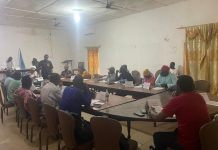By: Kebba AF Touray
The National Audit Office (NAO) has recommended to the National Water and Electricity Company (NAWEC) to create Water Safety Plan.
The office made this recommendation in its 2022 Performance Audit Report on the Provision of Water in Urban, Peri-Urban and Provincial Growth Centres by NAWEC, on risk of water contamination segment of the report.
NAO said: “NAWEC is recommended to create a Water Safety Plan that outlines steps to be taken to help mitigate emergencies when they occur.”
This recommendation, as indicated in the said audit report, was formed based on its findings in the said report, as it has discovered that NAWEC has not developed a WSP for its water network to provide guidance to the company on appropriate response and preventive measures of contamination.
The Office explained that according to World Health Organization (WHO) guideline for quality drinking water 2017, where a defined entity is responsible for a drinking-water supply, its responsibility should include the preparation and implementation of a Water Safety Plan (WSP).
The audit report stated that water safety planning is a risk assessment and risk management strategy that extends across the entire drinking-water supply chain, from sources to consumers.
It said, “A WSP’s primary goal is ensuring good drinking-water supply to minimize contamination of source waters, reduce or remove contamination through treatment processes, and prevent contamination during storage, distribution and handling.”
As highlighted by the NAO, contamination can occur at the source due to nitrate, iron, and fertilizer intrusion, among other contaminants, and that during distribution, pipe leakages or replacements can expose the water supply to pollution, allowing sewage and other contaminants to enter.
“NAWEC has established a maintenance team; however, there is no documented safety procedure to guide their work. When maintenance issues emerge, the maintenance staff are given verbal instructions instead. We noted that NAWEC did not have a WSP for its water system that outlines all potential emergencies and the actions that must be taken if they occur,” said the office.
NAO stated that underground water sources, such as Bakau, Bansang and Gunjur, have significant quantities of nitrates and irons.
“NAWEC has no mechanism in place to treat nitrates in water. Despite developing ways to remove or reduce the iron content of water to an acceptable level, these strategies have failed, since the water delivered to the residents of Gunjur and Bansang still contain significant levels of iron,” indicated NAO.
It averred that the residual chlorine in NAWEC’s water supply is deficient and so will not be able to eliminate contaminants if contamination occurs during storage, distribution, or handling.
The NAO stated that according to NAWEC’s water division management, the failure to develop a WSP for its water system was due to capacity and resource availability. NAO said: “However, during our interview with the Water Division Management, this was identified as a risk and management promised to develop a WSP over time.”
NAO said, “In the absence of a WSP, contamination emergencies cannot be swiftly and easily controlled, putting the lives of many at risk. For example, in 2020, garbage in the Bakau gutters infected NAWEC’s water pipes, resulting in the contamination of taps in Bakau residents’ homes. This lasted for months and caused health worries among the locals.”
“NAWEC is recommended to create a Water Safety Plan that outlines steps to be taken to help mitigate emergencies when they occur,” it added.
According to the Management in its response, NAWEC is aware of the important role water safety plans play in the management of a water supply system and not only to react to emergencies, but also to prevent a risk eventuating as well as to implement measures to minimize the impact of the risk if an emergency does occur.
“As part of our priorities Water Safety Plans are to be developed. Water Safety plans for our facilities will be developed for all facilities within the next 2 years,” said NAWEC Management.




















